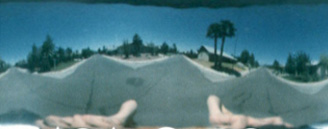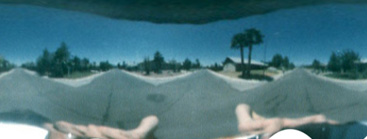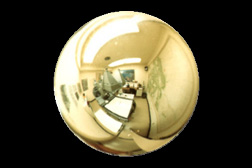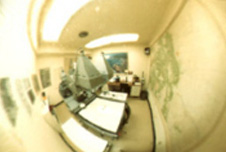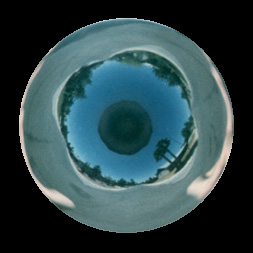 |
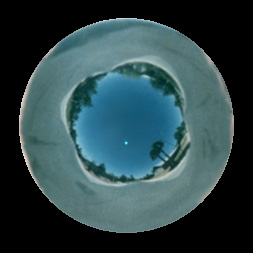
|
| The left image was taken from the center of an intersection with the prototype axial strut "Cassegrain" wide angle reflector which utilized an aspheric metalized plastic L'eggs egg. The angle of view is nearly 320 degrees and the central obscuration is 75 degrees. Panoramic overage is from about 70 degrees below the horizon to 52 degrees above. Some of my axial strut reflectors will cover even more - over 70 degrees above and below the horizon. The aspheric primary reflector points away from the camera, but its coverage is so wide that my fingers, elbows, and even parts of the camera appear on both sides of the image! (The newer Versacorp Omnirama T11 axial strut wide angle reflector has a larger diameter than this early prototype, allowing it to better "see around" the camera and photographer.) Note that the zenith is not at the center of this image, which was taken with a hand held camera having no level indicator. The ability to utilize hand held images which may be taken in more remote locations is why it is desirable to have software which can compensate for pointing errors. Uncorrected, this error will cause the horizon to be curved in a converted panoramic image. The right photo simulates the appearance of a "raw image" produced by the OmniLens. Note the absence of a central obscuration - a feature possible only with the OmniLens. In order to prevent obstruction of the subject by the photographer, the OmniLens should be used with a camera having a self timer or remote release, with the photographer either crouched under the tripod or at a good distance from it. The cost of the OmniLens can be lower if its coverage is limited to 320 degrees or so. | |
